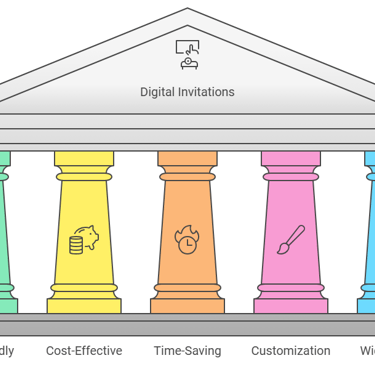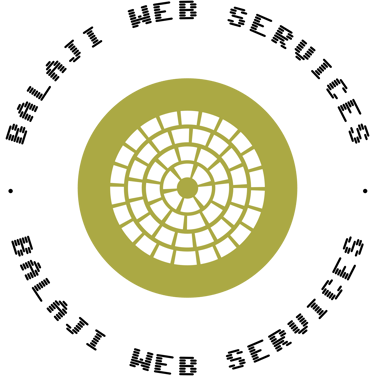Embrace Digital Invitations in Transformation Era
Discover how digital invitations are revolutionizing communication in the age of digital transformation. Explore the eco-friendly, cost-efficient, and convenient alternatives to traditional printed invitations for all your events.
DIGITAL CARDS
11/17/20245 min read


The Evolution and Benefits of Digital Invitations
In the digital age, traditional methods of communication such as printed invitations have given way to more innovative and efficient alternatives like digital invitations. This shift is driven by several advantages that make digital invitations an appealing option for personal and professional events alike. Whether planning a birthday party, wedding, corporate seminar, or product launch, digital invitations offer a host of benefits that cater to modern needs while being eco-friendly, cost-effective, and highly customizable.
One of the most significant benefits of digital invitations is their eco-friendly nature. The environmental impact of traditional printed invitations is undeniable, involving paper production, ink usage, and transportation logistics. By opting for digital invitations, individuals and businesses contribute to sustainability by reducing paper waste, deforestation, and carbon emissions. Digital invites generate no physical waste and minimize environmental harm, making them an ideal choice for those aiming to reduce their ecological footprint.
Cost efficiency is another compelling reason to choose digital invitations. Traditional printed invites involve expenses such as paper, printing, envelopes, and postage, all of which add up quickly, especially for large guest lists. In contrast, digital invitations eliminate these costs entirely. Online platforms such as Canva, Evite, and Paperless Post offer free or affordable templates, allowing users to design visually appealing invitations without breaking the bank. Businesses and individuals alike can save significantly, redirecting their budgets toward other event essentials.
Time-saving is a critical factor in the appeal of digital invitations. The traditional process of designing, printing, and mailing invitations is time-consuming and often prone to delays. With digital invitations, event organizers can create, customize, and send invitations instantly via email, messaging apps, or social media platforms. This immediacy is especially valuable for last-minute events or adjustments. Moreover, many digital invitation tools come equipped with automation features, such as RSVP tracking and automated reminders, streamlining event management and ensuring guests stay informed.
Customization is where digital invitations truly shine. Unlike printed cards, which often have limited design options, digital platforms offer a plethora of templates, colors, fonts, and interactive elements. Users can incorporate dynamic content such as GIFs, animations, videos, and clickable links to enhance the appeal of their invitations. This level of creativity not only makes invitations more engaging but also allows them to reflect the unique theme or tone of the event. Personalization is effortless, with drag-and-drop tools enabling even non-designers to craft professional-looking invites.
Digital invitations also offer unparalleled reach and accessibility. With the rise of globalization and remote connectivity, events often involve guests from different cities or countries. Sending physical invitations internationally is costly and time-consuming, but digital invitations overcome these barriers by enabling instant delivery to recipients worldwide. Furthermore, social media integration allows invitations to be shared broadly, making it easy to connect with larger audiences or promote events publicly.
While the advantages of digital invitations are evident, it is equally crucial to address the ethical considerations surrounding their creation and sharing. As digital tools make it easier to design and disseminate content, the risk of plagiarism increases. Ethical sharing practices ensure that creators' rights are respected and content remains original. One way to achieve this is by always acknowledging the source when using pre-made templates or designs. Giving credit to creators not only respects their work but also sets a positive example for others.
Using copyright-free resources is another effective strategy. Many platforms, such as Canva and Adobe Stock, offer free or affordable templates, images, and fonts that can be used without violating intellectual property rights. Additionally, websites like Unsplash, Pexels, and Pixabay provide a vast library of high-quality, royalty-free images. For those seeking unique designs, Creative Commons-licensed content can be a valuable resource.
To ensure originality, users should customize templates extensively rather than using them as-is. Modifying colors, fonts, layouts, and messaging ensures that the final invitation reflects the creator's vision while adhering to ethical standards. Writing personalized messages or crafting unique event details adds a touch of individuality that sets invitations apart from generic designs.
To prevent inadvertent plagiarism, creators can use tools such as Grammarly, Copyscape, or Turnitin to verify the originality of their text. Similarly, TinEye and Google Reverse Image Search can help identify whether an image has been used elsewhere. These tools empower creators to maintain ethical standards while avoiding legal complications.
Another important aspect of ethical sharing is obtaining permission before sharing or resharing digital invitations created by others. Even when content is labeled as copyright-free, it is courteous and professional to seek approval, particularly if the content will be used for commercial purposes. By doing so, users build trust and foster a culture of respect within the creative community.
Digital invitations also align well with search engine optimization (SEO) practices, making them a powerful tool for event promotion. Using the Google Keyword Planner tool, event organizers can identify trending keywords related to digital invitations, such as “eco-friendly invitations,” “cost-effective e-vites,” or “interactive event invites.” By incorporating these keywords into their invitation titles, descriptions, and event pages, organizers can enhance their online visibility, ensuring that their events reach a broader audience.
The SEO-friendly nature of digital invitations extends to their integration with social media platforms. Sharing invitations on platforms like Facebook, Instagram, and LinkedIn can amplify their reach, attracting more attendees and fostering engagement. Interactive features such as RSVP buttons or event countdowns further enhance the user experience, encouraging recipients to respond promptly.
Digital invitations are particularly beneficial for businesses, as they can serve as an extension of the brand’s identity. By incorporating company logos, brand colors, and taglines, businesses can create invitations that reinforce their brand image. For corporate events, digital invitations can include links to registration forms, event agendas, or promotional videos, providing recipients with all necessary information in a single, cohesive format.
For personal events, digital invitations offer a unique opportunity to express creativity and emotion. From animated wedding invites to playful birthday party e-vites, the possibilities are endless. By integrating photos, heartfelt messages, and nostalgic elements, hosts can create invitations that resonate with their guests on a deeper level.
The rise of hybrid and virtual events has further solidified the role of digital invitations. With many events taking place online, digital invites serve as the primary mode of communication. They can include essential details such as Zoom links, access codes, and technical requirements, ensuring that attendees have a seamless experience.
In conclusion, digital invitations are a versatile, sustainable, and cost-efficient solution for modern event planning. Their ability to save time, reduce environmental impact, and offer limitless customization makes them an indispensable tool for both personal and professional events. By embracing ethical sharing practices and leveraging tools like Google Keyword Planner, creators can ensure their invitations remain original, impactful, and widely accessible. As the world continues to embrace digital transformation, the adoption of digital invitations will undoubtedly grow, setting new standards for convenience and creativity in event communication.


Contact
contact@baos.in
© www.baos.in 2024. All rights reserved.
Quick Links
Call : 09629451110
